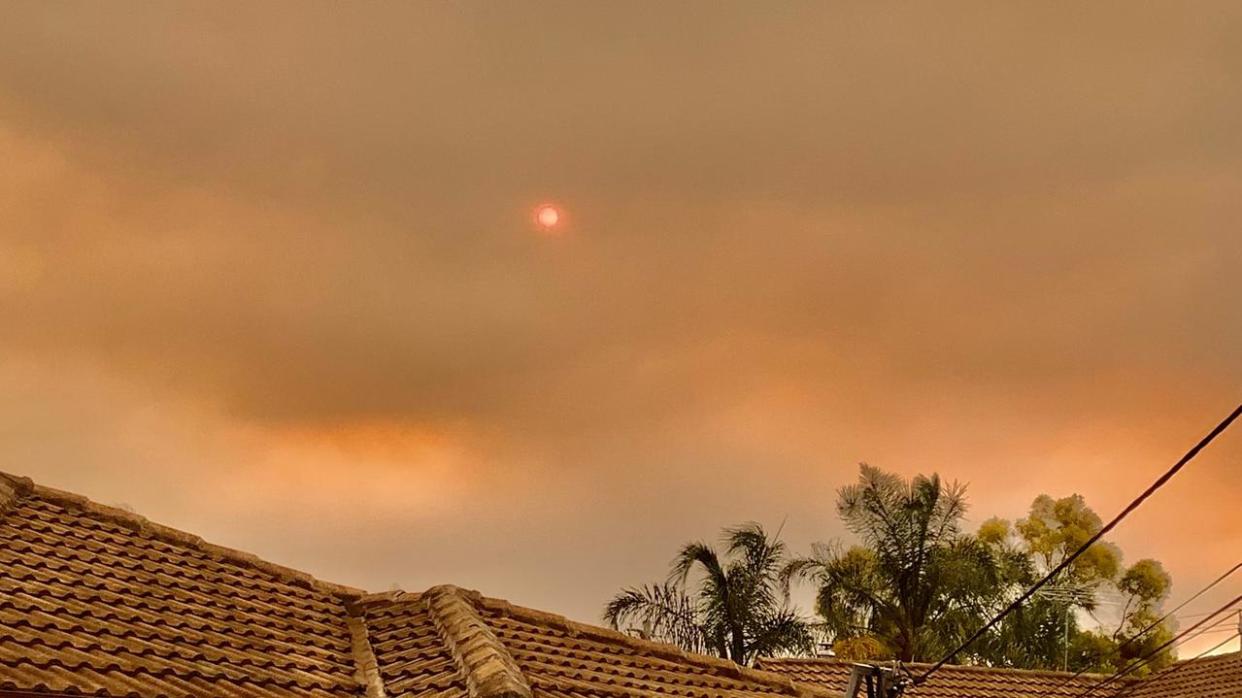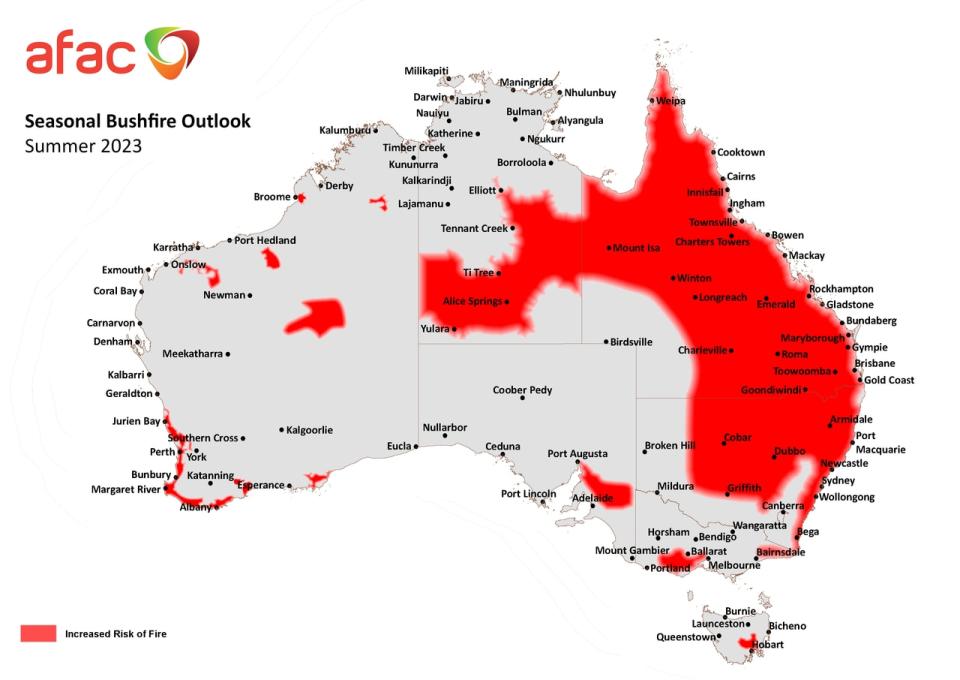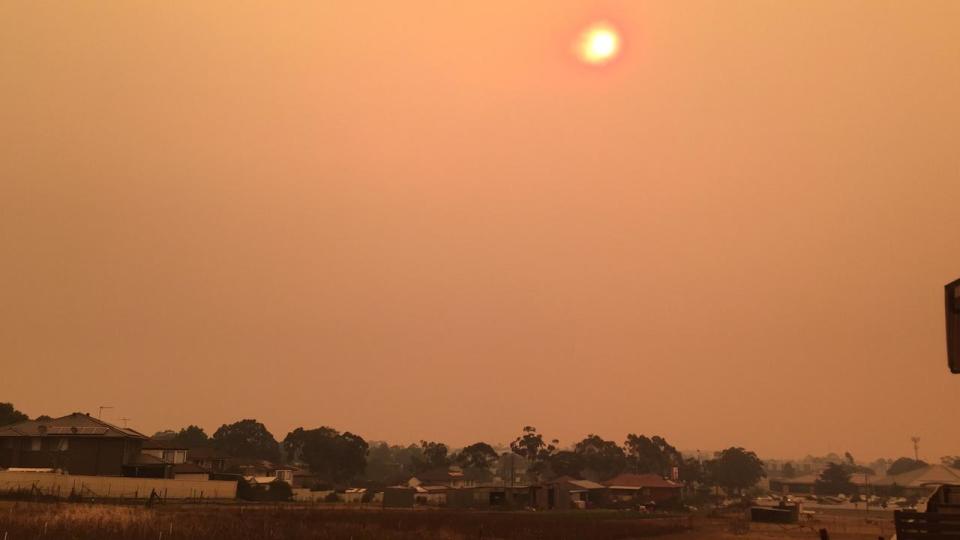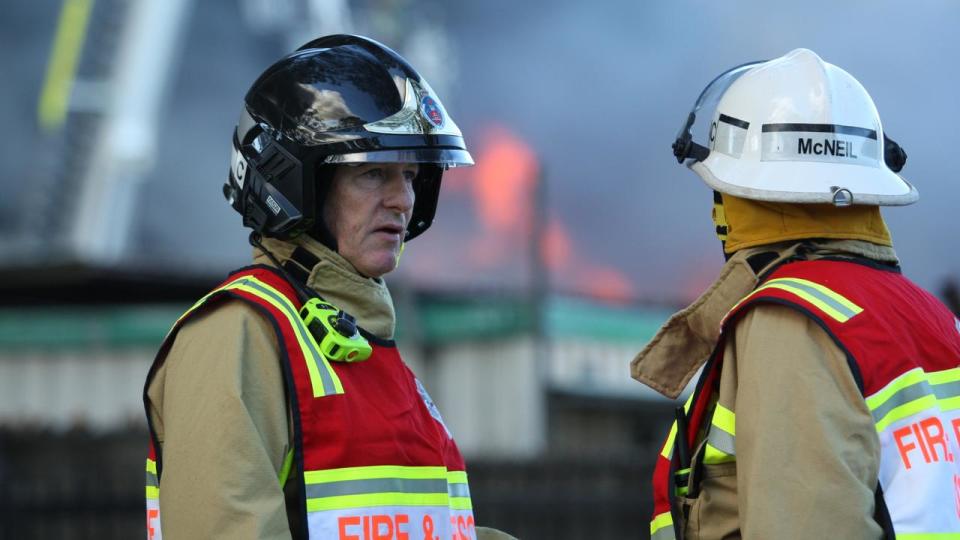‘Hottest on record’: Grim summer warning

A hot and dry summer is predicted after a year of multiple slashed heat records across the globe, experts say.
Every state is in the firing line for bushfires this Summer according to the latest forecast released on Thursday by the National Council for Fire & Emergency Services (AFAC).
The map of Australia shows large swathes of Queensland, NSW and the Northern Territory will be at increased risk of fire, while parts of WA, SA, Tasmania, and Victoria will also experience elevated fire danger.
Already this year Australia has recorded a series of concerning weather extremes, Climate Council Director of Research Simon Bradshaw said.
“At this point, it’s pretty much a mathematical certainty that 2023 will register as the hottest year on record,” he said.

July and August have been ranked among the 30 hottest months ever on record across the globe.
“We’ve seen a succession of records not only broken but the very margins by which they have been broken, have themselves set records,” Dr Bradshaw said.
Public health physician Kate Charlesworth predicts it’s “very likely” Australians will have to spend more time indoors this Summer.
“It’s a very real possibility that it won’t be safe to be outside for large parts of the day,” Dr Charlesworth said of this year and summers to come.
“As we saw during the Black Summer bushfire events, people were stuck inside for weeks and in some cases for months.


“The combination of extreme heat or bushfire smoke, it’s really going to impact our whole way of life and the summers that we’ve always known.”
This forecast comes as University of Sydney researchers suggested on Thursday that a “rethink” is needed on the maximum temperatures that humans can tolerate without suffering heat stroke.
Senior author Professor Ollie Jay of the university's Heat and Health Research Incubator said it was important to not just understand how people could survive, but rather what conditions allowed people to still be active, outdoors and living their lives.
“If we start using a more realistic, human-based model, the impacts are going to be more severe,” she said.

“They’re going to be more widespread and they’re going to happen sooner than we are projecting.”
Australia has already experienced “record-breaking dry conditions and warmer than average temperatures during early spring,” according to the AFAC summer bushfire outlook.
“Hot and dry conditions are expected to persist into the new year for many locations.”
Widespread and torrential rainfall in recent years has lead to significant grass growth and increased the flammability of fuel loads, including in areas that were burnt in the catastrophic Black Summer bushfires.

Former RFS commissioner Greg Mullins has seen first-hand the shocking speed at which land scarred in the 2019/20 fires has regenerated.
“They have regenerated far more quickly than we ever would have expected,” he said.
Until recently, firefighters and scientists had said we “shouldn't have to worry” about those areas for a number of years, but this has changed.
“Unfortunately that was blown away in September, when fires hit Bermagui on the Far South Coast of NSW,” Mr Mullins said.
“Then later a big fire west of Kempsey burning through scar areas actually generated enough heat to cause a pyro convective storm.”


